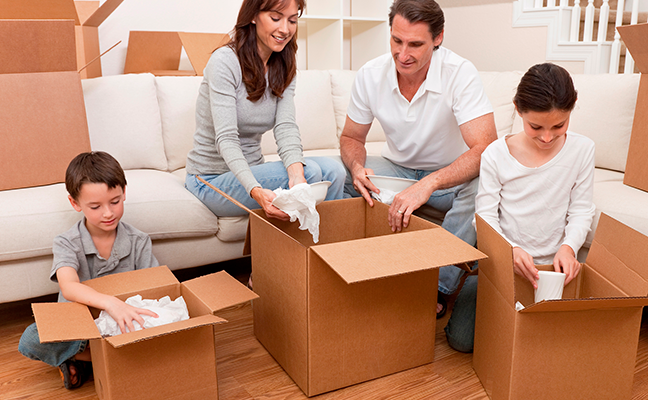Moving into a new place is both fun and daunting. The prospect of settling down in a new neighborhood is often an exhilarating experience. It could also be quite overwhelming. Packing all your belongings, transporting them safely, and unpacking and rearranging them are stressful enough. But relocation involves much more than that. There are things to settle, services to coordinate, people to inform, and documents to arrange. All these demand meticulous preparation.
So, how can you beat the chaos and get ready for an anxiety-free family move? Here’s what you need to know.
Start With a Plan
Planning things well ahead is crucial to avoid last-minute mishaps. If you want to ensure you don’t miss out on critical activities or leave them until the last moment, you must start with a solid plan.
Prepare a checklist
When the moving day gets closer, it’s easier to forget even the most obvious tasks as stress takes over. So, list down each step, no matter how small or trivial it may be.
Include both pre- and post-relocation activities. For example, you must cancel utility services and subscriptions at your old residence, bid farewell to neighbors, and arrange essential utilities, such as electricity, water, and gas, at your new home. You should also provide the new address to service providers and key organizations, such as your bank, loan providers, and insurance companies.
Organize critical documents
Filing important documents is another essential step that could save you time and anxiety later on. Organize all the paperwork related to your old house and the new one separately in one file. Also, put together personal documents of your family, including birth certificates, medical records, and bank statements, to ensure nothing gets lost in the middle of the chaos that will inevitably ensue on the moving day.
In addition, file contracts, estimates, invoices, and bills related to the relocation process. These are important to settle pending payments and track your budget. Keep copies of all these documents in soft and hard-copy formats as a backup.
Delegate responsibilities
Remember, you don’t have to shoulder the entire burden of moving. Allocate responsibilities among family members. Give them deadlines with clear instructions. Ensure they alert you of any bottlenecks. Then, once they are done, tick them off your checklist.
Get kids involved
Assign chores to get your kids involved. By allowing them to be part of the moving process, you can minimize much of the resistance, tension, and anxiety that relocation often brings about. Moving house is often an unwelcome change for kids—they must attend a new school, make new friends, and adjust to an unfamiliar environment. By making them part of the moving process, you can avoid alienation and get them excited about the new life that awaits them.
Hire a Moving Company
Moving companies offer various services, from packing to transporting and unpacking. So, start by determining what services you require. Then identify a few service providers. You can search for contacts on Leadar and ask your friends and family for recommendations.
Next, discuss your needs and review their terms and conditions. Be mindful of their responsiveness and service standards, and ensure they have the necessary insurance and licenses.
By comparing a few quotations, you can get an idea about the general cost of hiring professionals and prepare a more realistic budget. Also, take into account additional expenses you may incur after moving.
If the cost of hiring a moving company is too high, consider handling the process yourself. With some help from friends and family, you could ease the workload and save a substantial amount of money. But it is not without drawbacks. So, assess the pros and cons before making a decision.
Get Packing
As time goes by, many people amass items they don’t really need or use—from high school memorabilia to kids’ old clothes. As a result, packing could take more time than you anticipate. Besides, taking all your possessions to a new home will increase the moving costs, too. This is why separating the essentials from what you can leave behind is important. Declutter what you don’t need by disposing of them, selling them online, giving them away to a friend, or donating to a charity.
Once you have identified what to take, arrange for necessary packing materials, such as boxes, bubble wrap, and other supplies, and get to work.
Keep these tips in mind:
Not every item needs packing.
You don’t always need to pack everything into boxes. Some items, for example clothes and linens, can be left in their original storage unit, whether it is a dresser or stackable drawers, for ease of transport.
Pack with unpacking in mind.
Avoid the urge to dump items into random boxes. Instead, start with the end in mind. Adopt a system that allows you to easily place things in their designated places when you get to your new home. This could save you time and hassle when it comes to unpacking.
Labels and inventory lists are crucial.
Labeling items is essential to identify what is inside each box. Remember, you don’t want to rummage through half the boxes to find a toothbrush when you are tired and worn out at the end of a busy moving day. Organizing items of the same category into one packing box and preparing an inventory list can save you from all this hassle.
Some items need special care.
Consider breakables, valuables, and other items that need special care or attention, and pack them accordingly. For instance, pack and label fragile items and keep them in a separate area. Carry valuables with you instead of placing them in the care of the moving company.
Prepare a priority box.
You will not have the time or energy to unpack everything on day one. So, pack all the essentials you will need to survive the first 24 hours in a separate box. It can include towels, toiletries, water and cups, clean sheets, change of clothes, medication, phone chargers, and any other item your family might need.
Label the box and keep it separately. This should be the first box you open when you move into your new home.
Get Ready for an Anxiety-Free Family Move
With adequate preparation, you can significantly minimize moving-day stresses, avoid chaos, and ensure a seamless experience for you and your family. Create a comprehensive checklist and get started on the prep work as soon as the big move is confirmed.










Comments